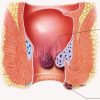- Empty cart.
- Continue Shopping
The Role of Exercise in Preventive Care

Exercise is often hailed as a cornerstone of a healthy lifestyle, and for good reason. Beyond its well-documented benefits for physical fitness and weight management, exercise plays a pivotal role in preventive care.
Understanding Preventive Care
Preventive care encompasses measures taken to avoid illness, injury, or other health problems before they occur or progress. These measures can be divided into three main categories:
- Primary Prevention: This involves interventions aimed at preventing a disease or health problem from occurring in the first place. Exercise falls primarily into this category.
- Secondary Prevention: Secondary prevention focuses on detecting and treating diseases or health problems in their early stages to prevent further progression.
- Tertiary Prevention: Tertiary prevention aims to reduce the impact and complications of established diseases or conditions.
The Impact of Exercise on Preventive Care
1. Cardiovascular Health
Regular physical activity is one of the most effective ways to reduce the risk of heart disease and stroke. Exercise helps lower blood pressure, improve cholesterol levels, and enhance overall cardiovascular function. It also contributes to maintaining a healthy weight, which is a crucial factor in heart health.
2. Type 2 Diabetes Prevention
Engaging in regular exercise improves insulin sensitivity, making it easier for your body to manage blood sugar levels. This is particularly important for preventing or managing type 2 diabetes. Even a moderate amount of physical activity can significantly reduce the risk of developing this condition.
3. Cancer Prevention
Studies suggest that physical activity may lower the risk of certain types of cancer, including breast, colon, and lung cancer. Regular exercise can help control weight, reduce inflammation, and support the body’s natural defenses against the development and progression of cancer.
4. Bone Health
Weight-bearing exercises, such as walking, running, and resistance training, promote bone health by increasing bone density and strength. This can help prevent osteoporosis and reduce the risk of fractures, particularly in older adults.
5. Mental Health
Exercise is not just beneficial for the body; it also has a profound impact on mental health. Regular physical activity can reduce the risk of depression and anxiety and improve overall psychological well-being. It is known to release endorphins, which are natural mood lifters.
6. Weight Management
Maintaining a healthy weight is crucial for preventing numerous health conditions, including obesity, which is linked to diabetes, heart disease, and certain cancers. Exercise, in combination with a balanced diet, is key to achieving and sustaining a healthy weight.
7. Immune System Support
Regular exercise can enhance the immune system’s ability to ward off infections and diseases. While extreme exercise can temporarily suppress the immune system, moderate, consistent physical activity has a long-term positive impact on immune function.
8. Cognitive Function
Exercise is not only good for the body but also for the brain. It has been linked to improved cognitive function and a reduced risk of cognitive decline and dementia in older adults.
How to Incorporate Exercise into Preventive Care
1. Consult with a Healthcare Provider
Before starting a new exercise regimen, especially if you have underlying health conditions or haven’t been active for a while, it’s wise to consult with a healthcare provider. They can provide guidance on the most suitable exercise plan for your individual needs.
2. Choose Activities You Enjoy
The best exercise routine is one you can stick to. Find physical activities that you genuinely enjoy, whether it’s dancing, swimming, cycling, or hiking. This makes it more likely that you’ll maintain a consistent exercise habit.
3. Set Realistic Goals
Start with achievable goals, and gradually increase the intensity and duration of your workouts as your fitness level improves. This gradual approach helps prevent injuries and burnout.
4. Incorporate Strength Training
In addition to cardiovascular exercise, include strength training in your routine. Building muscle not only enhances physical fitness but also supports bone health and metabolism.








